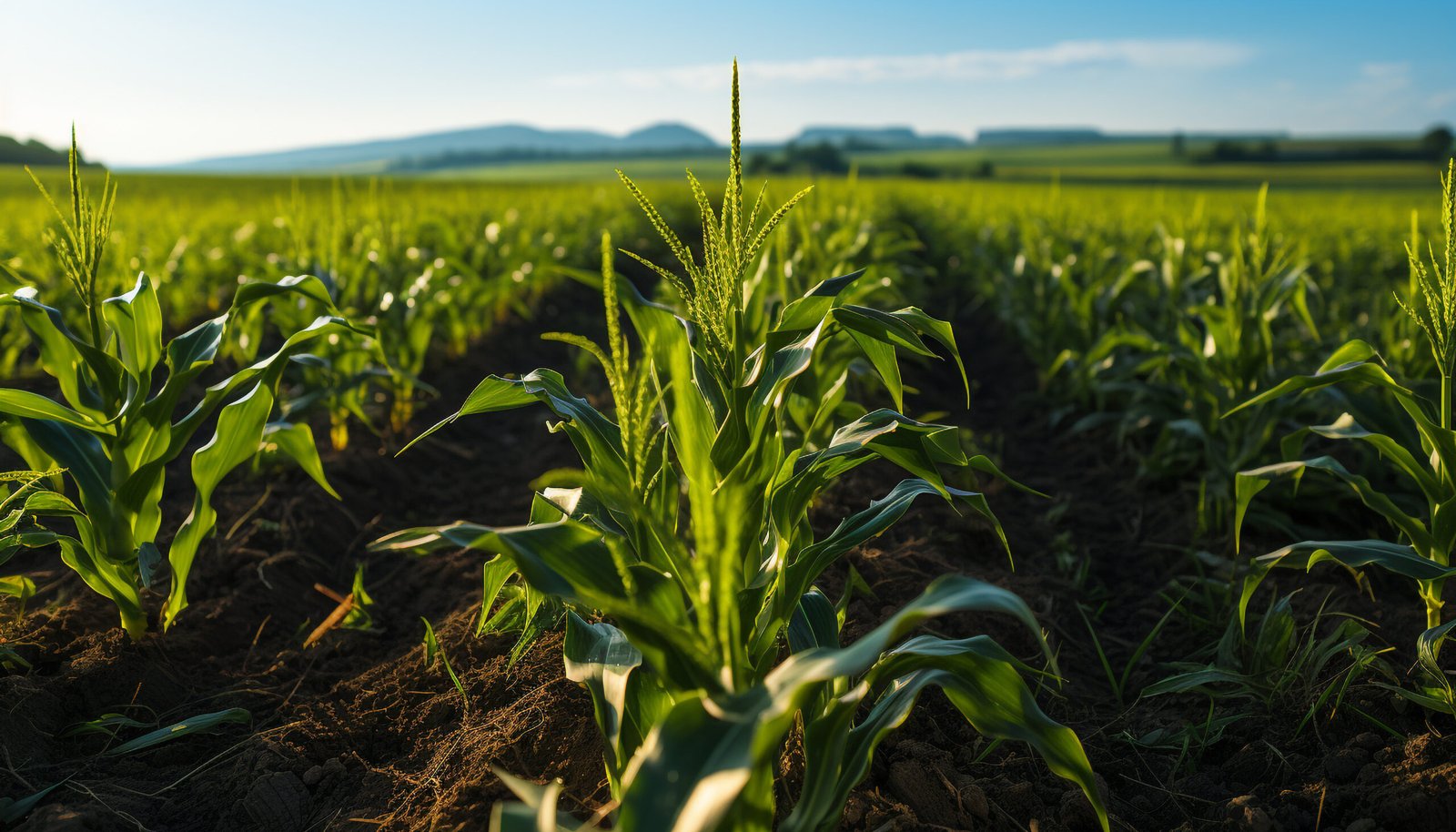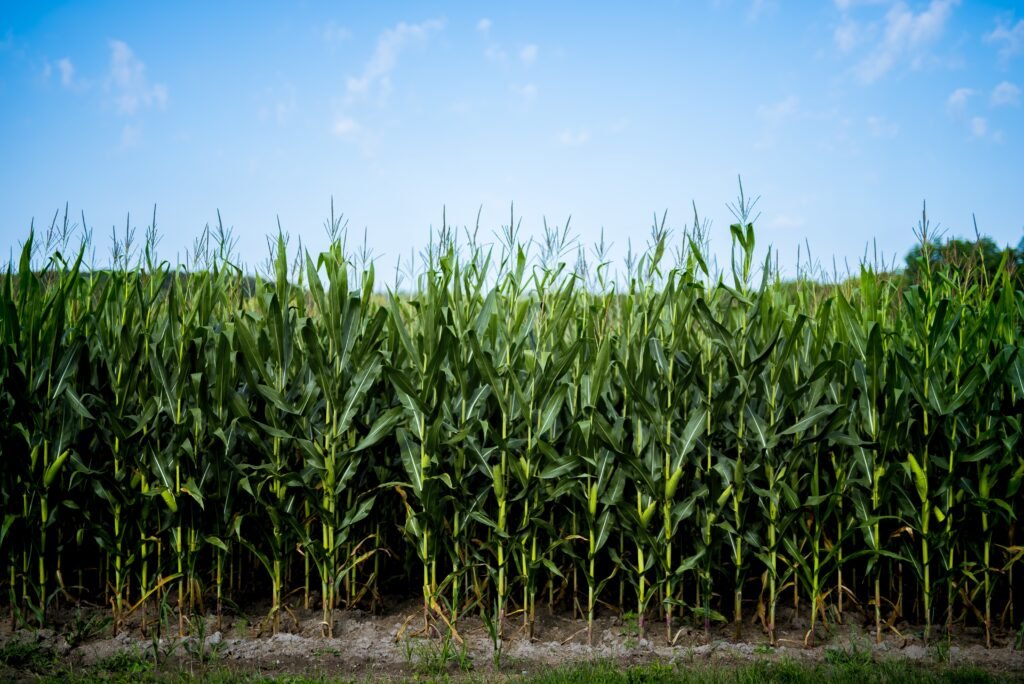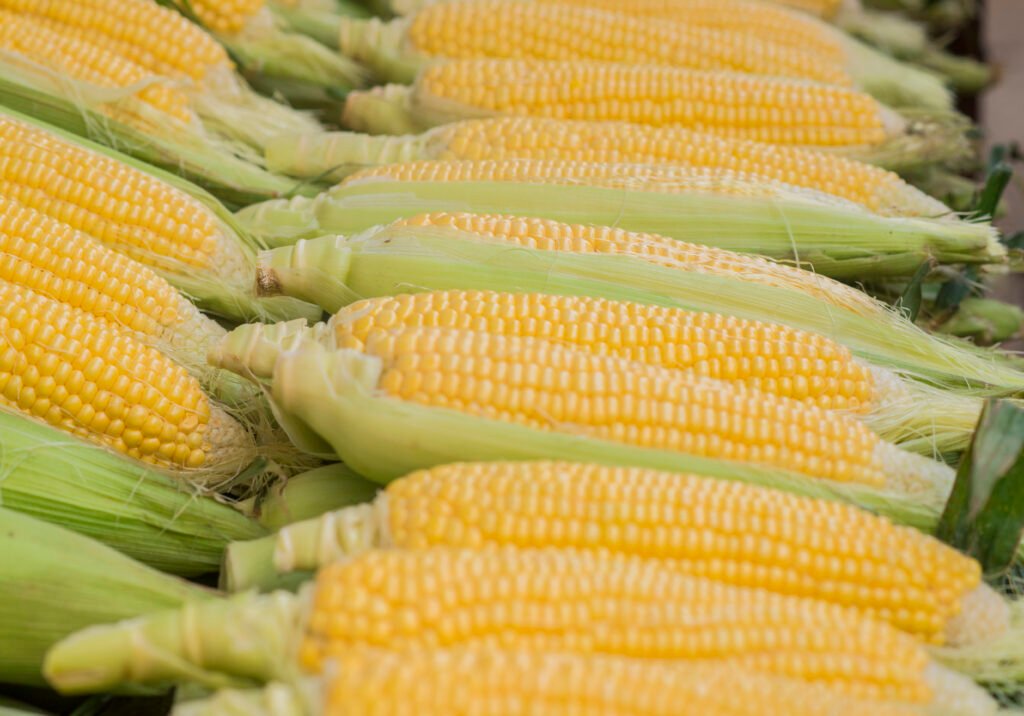Latest News
Sweet Corn as a Profitable Kharif Crop | What Farmers Need to Know in 2025

Sweet corn has been a profitable and rapidly growing agricultural option in India in recent years, particularly for small and marginal farmers. Sweet corn (Zea mays saccharata) presents a viable alternative to conventional cereal crops like rice and wheat due to its short growing cycle, robust export potential, and rising local demand.
Sweet corn is becoming more and more popular in quick-service restaurants, hotels, urban markets, and processed food categories as India’s customer base becomes more health aware. By moving to high-yielding sweet corn varieties that provide stable yields and higher market prices, farmers are capitalizing on this trend.

Knowing About Sweet Corn
The sugar content and suppleness of sweet corn are different from those of typical field corn or maize. Because it includes more natural sugar and is gathered while the kernels are still immature, it is sweeter and more appetizing. Sweet corn is planted mainly for human consumption, as opposed to dent corn, which is utilized for industrial processing or animal feed.
It is perfect for crop rotation and intercropping because of its short duration (75–90 days) and low water needs, which allow farmers optimize their land usage and revenue.
Perfect Conditions for Growing Sweet Corn
🔸 The climate Warm, moderate to tropical temperatures are ideal for sweet corn growth. The optimal temperature range for growth is between 20°C and 30°C. It thrives in areas with moderate rainfall and excellent drainage since it is susceptible to frost and standing water.
🔸 Soil Sandy loam or well-drained loamy soils that are high in organic matter are ideal for sweet corn growth. The ideal pH range for soil is 5.5 to 7.5. Steer clear of waterlogging-prone thick clay soils.
🔸 SeasonSweet corn is cultivated in India in:
- Kharif: Monsoon-planted crops (June to August)
- Rabi, a crop grown in the winter (October to December)
- In irrigated places, Zaid is a summer crop that is planted from February to April.

A beautiful shot of cornfield with a blue sky in the background
🌾 Agronomic Practices
1. Land Preparation To prevent waterlogging, the land should be leveled and plowed two or three times to a fine tilth. For growing sweet corn, raised beds or ridges are ideal.
2. Choosing and Planting Seeds
Make use of premium hybrid sweet corn seeds such as Honey-75, Madhuri, Misthi, or Sugar-75. Eight to ten kg of seed per acre are recommended.
- 60 cm by 20 cm is the spacing.
- Plant seeds 2–3 cm deep.
- Method: Dibbling or line sowing works well.
3. Watering
Regular watering is necessary for sweet corn, particularly throughout the periods of blooming and grain filling. Drip irrigation increases production and water usage efficiency.
First irrigation: just after planting
Irrigation intervals after that: based on soil moisture, every 7–10 days
💧 Management of Fertilizer and Nutrients
Sweet corn requires a lot of nutrients. During the field preparation process, apply 8–10 tons of well-decomposed farmyard manure (FYM) per acre.
The suggested amount of fertilizer per acre:
- N (nitrogen): 80–100 kg
- Calcium (P): 40–50 kg
- K (potassium): 30 to 40 kilogram
Divide the nitrogen dosage into three stages: pre-flowering, knee-high stage, and sowing. Add boron and zinc to increase the flavor and size of the cobs.
Management of Pests and Diseases
Typical pests include stem borer
- Armyworm in autumn
- Cutworms
- To reduce crop loss, use pheromone traps, biopesticides based on neem, and early detection techniques.
- Conditions: Downy mildew
- The color rust
- Blight on leaves
Crop rotation and fungicide treatment of seeds may lower the incidence of disease. Avert overhead irrigation in regions that are prone to illness.
🧺 Harvesting and Production
When the kernels are plump, milky, and delicious, sweet corn is harvested during the milk stage. Tough kernels and lower sugar content might be the consequence of delayed harvesting.
Harvesting period: 75–85 days
Yield on average: 20–25 quintals of fresh green cobs per acre
Sweet corn is very perishable, thus timely harvest and market access are essential. For transportation, use containers or crates with ventilation.

Fresh sweet corn. Fresh Corns in Market. Corn cob between green leaves.
💰 Market Demand and Economics
In tier-1 metropolitan hubs and metro areas, sweet corn is much sought for. It may be purchased fresh, frozen, tinned, or prepared into salads, snacks, and soups. Typically, prices are two to three times higher than those of ordinary corn.
Cultivation costs range from 18,000 to 25,000 naira per acre.
Gross returns: ₹40,000 to ₹60,000 per acre
Approximate net income each cycle: ₹20,000 to ₹35,000
Farmers that collaborate with local mandi dealers, processors, or FPOs sometimes get higher pricing.
The Benefits of Growing Sweet Corn
- Quicker returns due to a shorter crop period
- Ideal for growing veggies with other crops
- Strong market due to rising urban demand
- Not as resistant to pests as conventional maize
- encourages crop diversity
🧑🌾 Achievement Story
Gujarati farmer Ramesh Patel transitioned from farming cotton for 15 years to sweet corn. “I made ₹45,000 from just one acre in my first season,” he claims. “I was able to secure a contract with a local food processor, and the crop needed less pesticide.”
❓ FAQs for the blog about sweet corn cultivation
1.What time of year is best in India for growing sweet corn?
A: For greatest results, sweet corn should be seeded between June and September, between the Kharif (monsoon) and Rabi (winter) seasons.
2.How long does it take for sweet corn to reach harvesting maturity?
A: Depending on the temperature and soil quality, the majority of sweet corn cultivars reach maturity 75–90 days after seeding.
3.Which frequent diseases and pests impact sweet corn crops?
A: Common pests include rust, armyworms, and stem borers. It’s critical to use IPM or biological treatments for timely pest control.
4.Is it advantageous for small farmers to grow sweet corn?
A: It provides excellent returns on investment because of its short growth cycle, steady market demand, and intercropping possibilities.
5.What are the best soil and fertilizer conditions for growing sweet corn?
A: A well-drained loamy soil with a pH of 5.5 to 7.5 is ideal for sweet corn growth. For optimal results, use nitrogen-rich, balanced fertilizers.
✅ Wrapping Up
For Indian farmers looking for crop diversity, increased revenue, and reduced input risks, sweet corn growing is a feasible and lucrative crop alternative. In only three months, sweet corn may provide outstanding results with the right seed selection, prompt watering, and insect management.
Sweet corn provides smallholders and big farms with the ideal balance of profitability, sustainability, and scalability as consumer demand for wholesome, easily prepared veggies increases.












